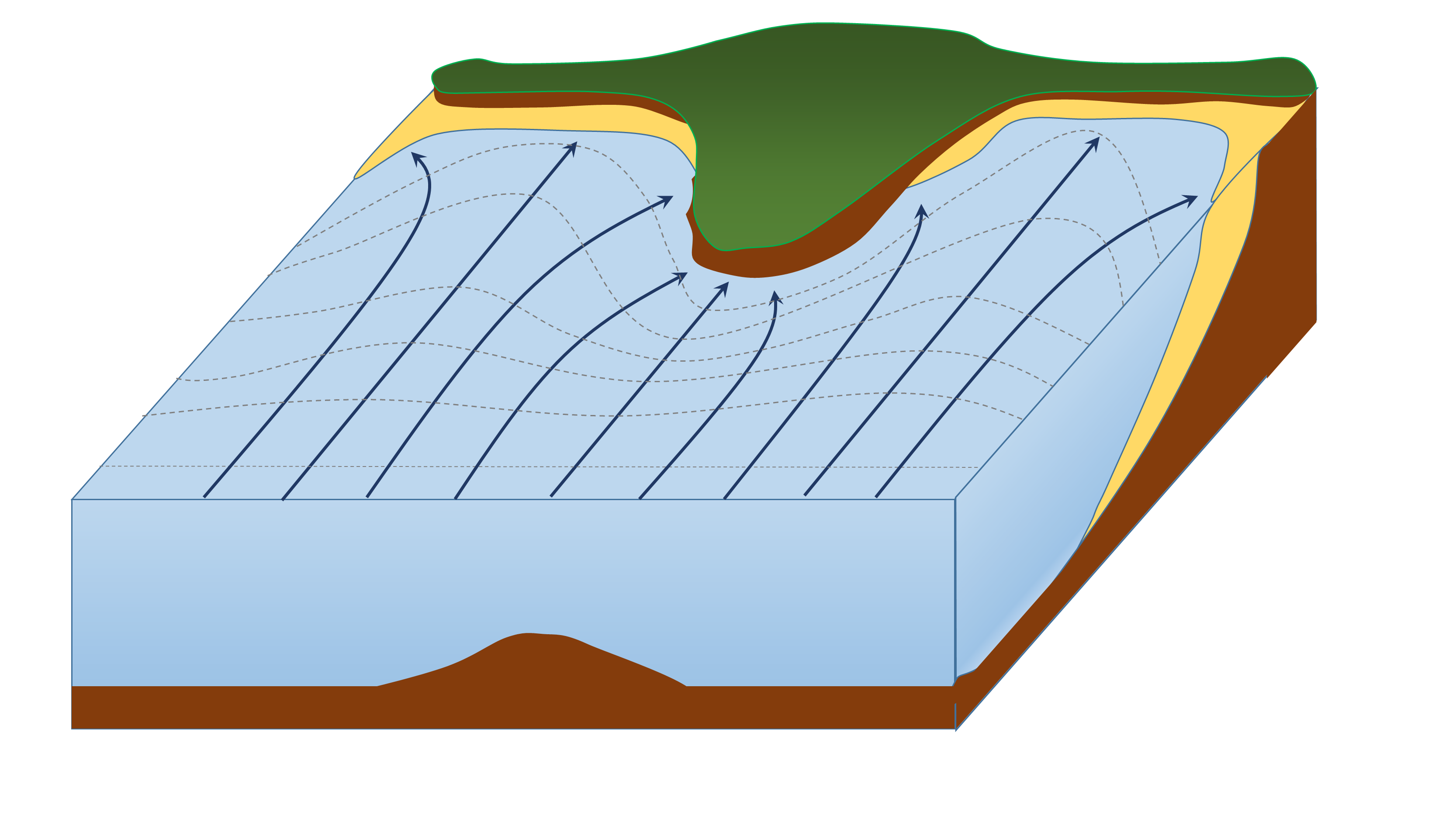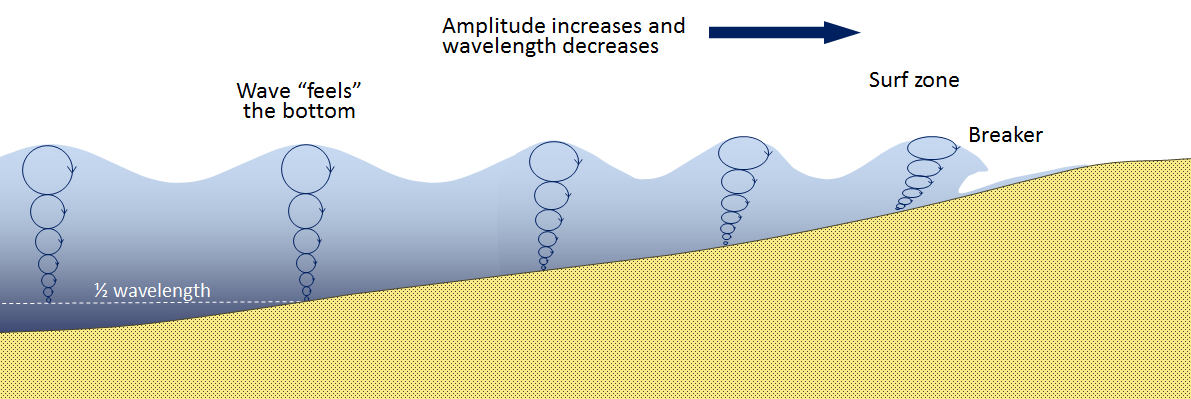As a Wave Approaches Shore Which of the Following Increases
As the waves arises in the sea the wavelength of the waves keep on decreasing from the mid of the sea till the shore. Waves break as they approach shorelines because.
The wavelength snorters and the height of the crest increases.
. It is a surprising phenomenon which all loves to watch. A wave with a very long wavelength traveling hundreds of miles an hour moves across the ocean. Their height increases as depth decreases their velocity decreases as depth increases and their wavelength decreases as depth increases.
The waves begin to interact with the ocean floor. As the waves approach the shore the troughs of the waves encounter resistance from the bottom of the. See answer 1 Best Answer.
See answer 1 Best Answer. The wave height and wave trough both increase as it approaches the. That means that the deepest water.
Wave steepness reaches a ratio of 17. As a wave approaches the shore what happens to wave speed. However as waves approach the much shallower water near the shore they start to feel the bottom and they are affected by that interaction Figure 174.
As the wave enters shallow water the wave height increases and the wavelength decreases. It is assumed that question pertains to waves in ocean. The waves begin to interact with the ocean floor.
However the wave still contains the same amount of energy so while the wavelength. Amplitude is also called Wave Height. They increase in height as the energy in each wave.
What happens to wave height and wave length when a wave approaches the shore. Figure 1031 As waves approach shore they touch bottom when the depth equals half of the wavelength and the wave begins to slow down. Important parameters of waves formed in ocean are shown in the figure below.
As a wave approaches shore its characteristics change by. When a wave approaches the shore it breaks. As the wave enters shallow water the wave height increases and the wavelength decreases.
Which of the following progressive waves best describes ocean waves. Waves only appear to break at the shoreline. The water particles speed up as they approach landc.
B The angular momentum remains constant because there is a changing net torque acting on the system that averages to zero over time. The height of each wave increases as it approaches shore causing greater amounts of sand to be swept away. Group of answer choices.
They were generated by local wind. The water particles speed up as they approach land. Incoming waves cause the water to simply rise and fall rather than form a surf sone what does this tell you about these shorelines.
It is still unknown. The wave orbits are both. The same mass of water runs into shallower and shallower water making the height of.
The waters density decreases because its warmer near the shore. When the water depth decreases to one half of a waves wavelength the wave starts to feel the bottom. This forces the wave to grow upwards so wave height increases.
The base of the wave is slowed down by friction against the sea bottom while the top of the wave rushes ahead so the wave. The waves begin to interact with the ocean floor. As waves approach the shore interaction with the sea floor slows the waves down and the crests of the waves bunch up.
As is slows the wavelength decreases and the. As one wave slows down the one behind it catches up to it thus decreasing the wavelength. C The angular momentum.
Destructive wave interference results in. The waters density decreases because its warmer near the shore. Capillary waves aid in the formation of larger waves.
Waves are responsible for nearly 70 of the total erosion on coastal beaches.

10 3 Waves On The Shore Introduction To Oceanography

Comments
Post a Comment